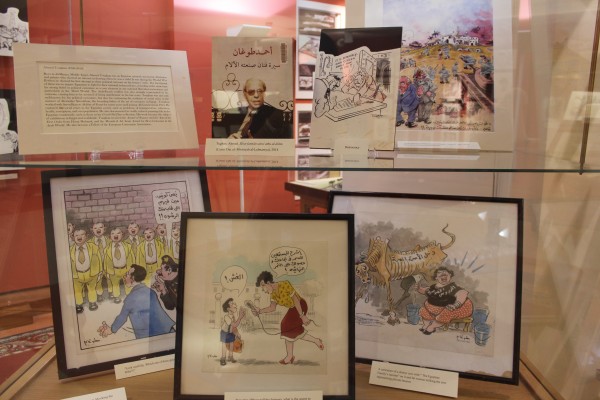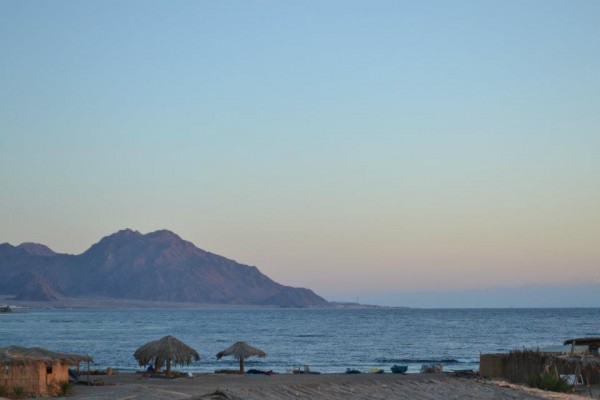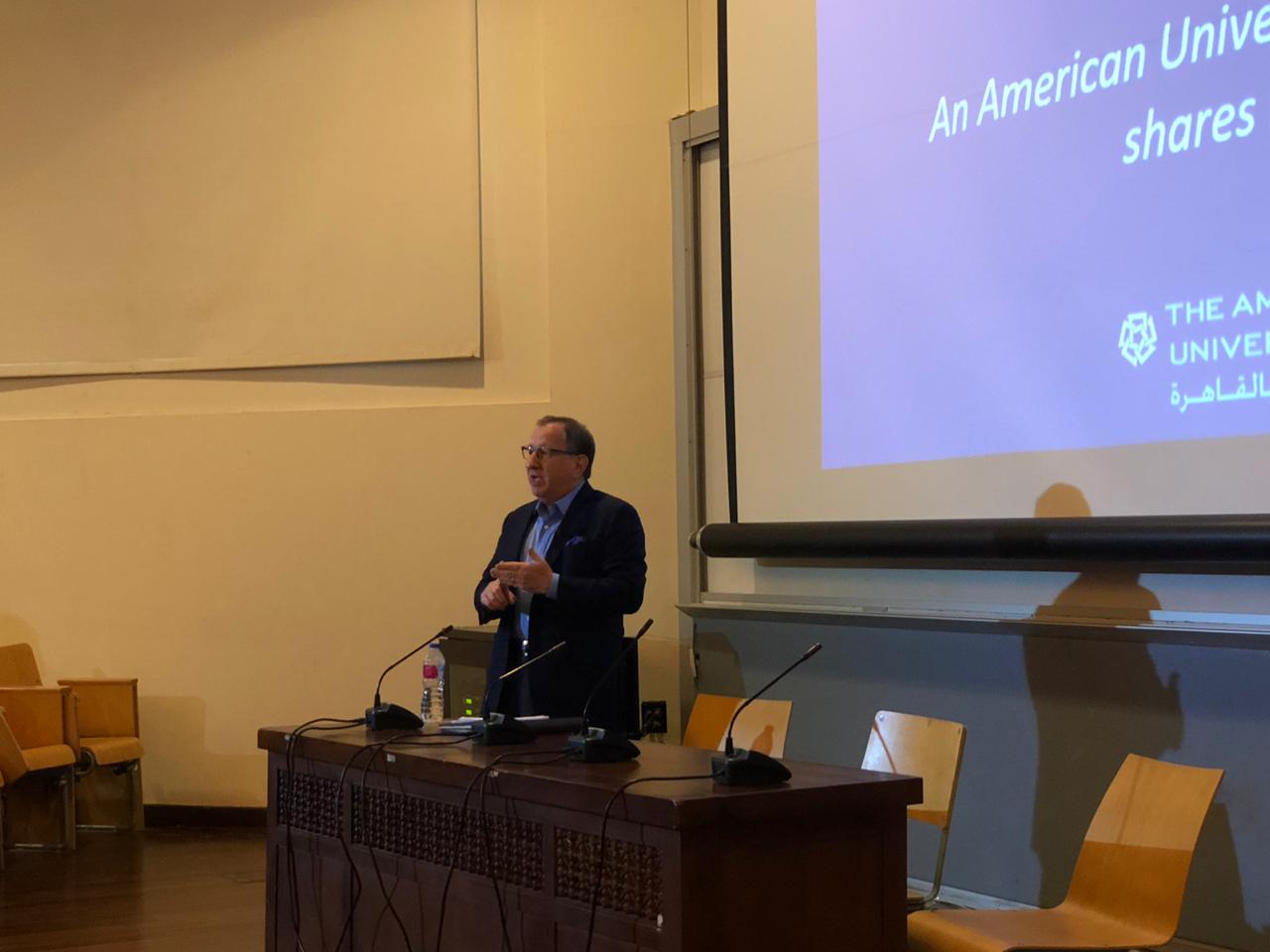From Portraitures to Caricatures: Unearthing Hidden Treasures
![AUC’s RBSCL showcases historical Egyptian works ranging from portraitures to caricatures [Yasmeen Shaheen]](http://www.auccaravan.com/wp-content/uploads/2016/10/IMG_6107-e1477906119819.jpg)
[Yasmeen Shaheen]
By Yasmeen Shaheen
@YasmeenShaheenn
On October 17, AUC brought to light many long-kept works of art that had remained within the library’s special collections section.
The Hidden Treasures exhibition on the third floor consists of objects that were unveiled to the audience for the first time, including photographs, documents and other artifacts.
“The purpose of this exhibition is to inform the students that the library has several treasures that need to be dug out,” Specialist Research Heba Shet said.
Although the artifacts are separate in nature, they are still linked together by a common theme.
Collectively, they serve as guides for scholars of diverse interests, such as those concerned with teaching archival literacy.
“The library possesses such treasures for the students to benefit as much as they can in their researches,” Associate Dean for Rare Books and Special Collections Philip Croom told The Caravan.
As one enters the exhibit, the first items on display are the maps and designs used by well-known architects for massive projects.
Among these is Hassan Fathy, who built the new Gourna village in Nubia in 1959, was awarded the Aga Khan award for architecture, having been recognized for his architectural impact on Egypt.
The display also included Ramses Wissa Wasef, an Egyptian architect who designed the Lycée Francais in Bab-el-Louk in 1948.
Wasef also designed the Virgin Mary Coptic Church in Zamalek in 1957, and the Mahmoud Mokhtar Museum in El-Gezirah in 1962.
The work of Sayed Karim, who gained recognition as the first Egyptian urban planner, was also on display.
He was appointed by the United Nations (UN) to draw plans for cities in Arab countries and to design their royal palaces, including Jordan, Baghdad and Riyadh.
He was also commissioned to redesign the city of Santiago, Chile following the earthquake of 1972.
As you move on through the exhibition, the mood lightens with the introduction of caricatures, which are an amalgam of wit and humor that stretch the boundaries of satire.
Turning left, one comes across a rare find – a milieu of letters sent by iconic leaders such as Gamal Abdel Nasser and Anwar Sadat to AUC.
Among these is a collection of photographs showcasing previous AUC presidents donating blood to the Egyptian Blood Bank.
The exhibition comes to an end with Van Leo, the pioneering photographer who contributed to the Golden Age of Egyptian Cinema by capturing striking shots of Egyptian superstars such as actors Roushdy Abaza, Faten Hamama, Samia Gamal and Omar Sharif.
The exhibition also featured Van Leo’s camera which he had used to capture iconic portraits of singer and composer Mohammed Abdelwahab, actress Lobna Abd El Aziz and screen siren Zubeida Tharwat.
There was also a captivating shot of the first Egyptian President Mohamed Naguib.
“I didn’t know that we had such a great amount of Van Leo’s photographs and even some of his equipment,” said political science major Martina Labib.
The conservation of the cultural and historical heritage of Egypt and the region has been one of the main objectives of The Rare Books and Special Collection Library (RBSCL) since its creation in 1992.
In addition to housing stellar collections of rare books, documents, manuscripts and other archival collections from Egypt, the Middle East and other parts of the world, the RBSCL strives to preserve these for posterity, all the while increasing their accessibility through digitization.




